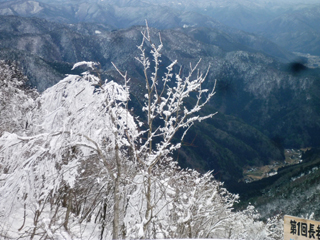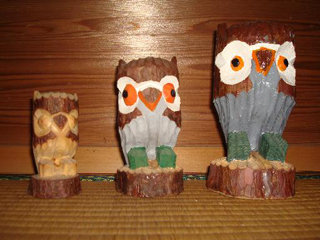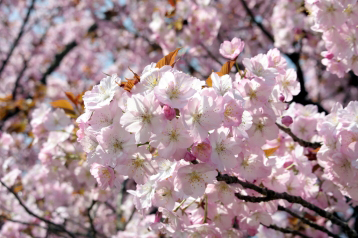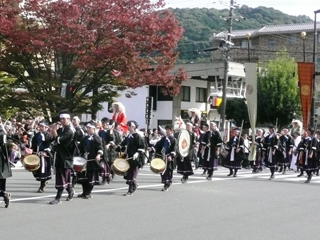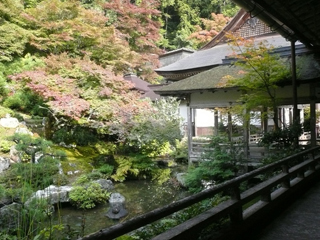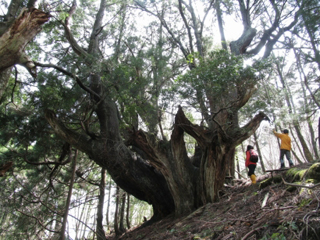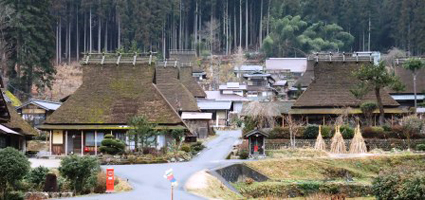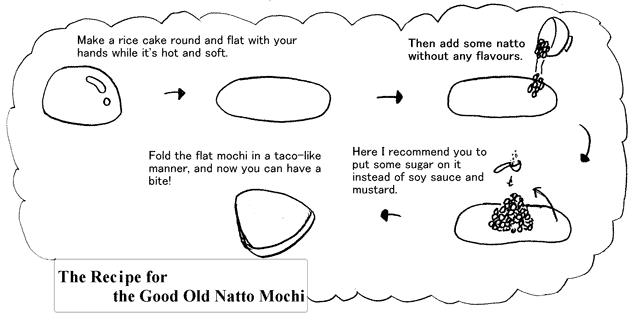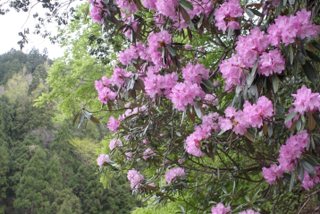
A New Encyclopaedia of Kitakuwada SHS and
the Area around It, Published by the Students Themselves
Student’s Foreword
This project of preparing for an encyclopaedia of our hometowns turned out to be a very good opportunity for us. We made many new discoveries, though it is a land which we were already accustomed to and fond of, and many wonderful things about Kitakuwada (北桑田) were noticed. Hereafter, we have to protect this wonderful land and the traditional culture. We hope that many people will visit our towns and enjoy themselves there.
The Staff’s Foreword
Kitakuwaedia (『キタクイディア』or『北桑百科』) is an encyclopaedia of the Kitakuwada area in the cities of Kyoto (京都市) and Nantan (南丹市), written by the seniors at Kyoto Prefectural Kitakuwada Senior High School (京都府立北桑田高等学校). Recently interest in ecology and natural environments has been growing, yet there is very little written in English about the area and its great environmental beauty. Partly due to its geographic isolation from the rest of the two cities that it is a part of, most foreign travel guides about Japan do not mention the area. This has left the value of the area virtually off limits to those who do not understand Japanese.
Below you will find information about the abundance of natural sights in the area, as well as various other things of interest. This encyclopaedia is meant to open up this new world to English speakers in a way that has not been done before.
The project of Kitakuwaedia has been carried out by students at Kitakuwada SHS, and we would like to thank them for what they have done for the project. In addition to writing the text of the various entries, they provided most of the pictures you will find throughout the encyclopaedia. We would also like to thank all the people who earnestly supported and advised us for their kindness and understandings towards this project of ours. We hope that we will have an opportunity to revise and enlarge the encyclopaedia in the future.
Neil Murphy and Kazunari Takaya
| A | B | C | D | E | F | G | H | I | J | K | L | M |
| N | O | P | Q | R | S | T | U | V | W | X | Y | Z |
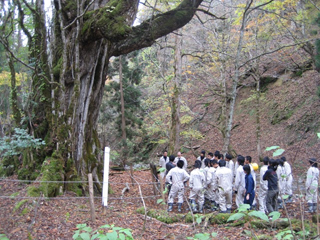 |
I’ll introduce the primeval forest in Ashu. The area is northwest of Kyoto and borders Fukui Prefecture (福井県). This forest is characterized by a variety of wildlife. There are many kinds of plants and animals which belong to both northern and southern parts of Japan because the forest is on the border of climate zones. We can also find some kinds of natural monument like the Japanese serow, or kamoshika (カモシカ), and the great salamander, or osanshouo (オオサンショウウオ). Lately, many oak trees in the forest are dying because the ecosystem is changing. We have to reduce CO2 emission in order to protect the beautiful forest of Ashu. |
